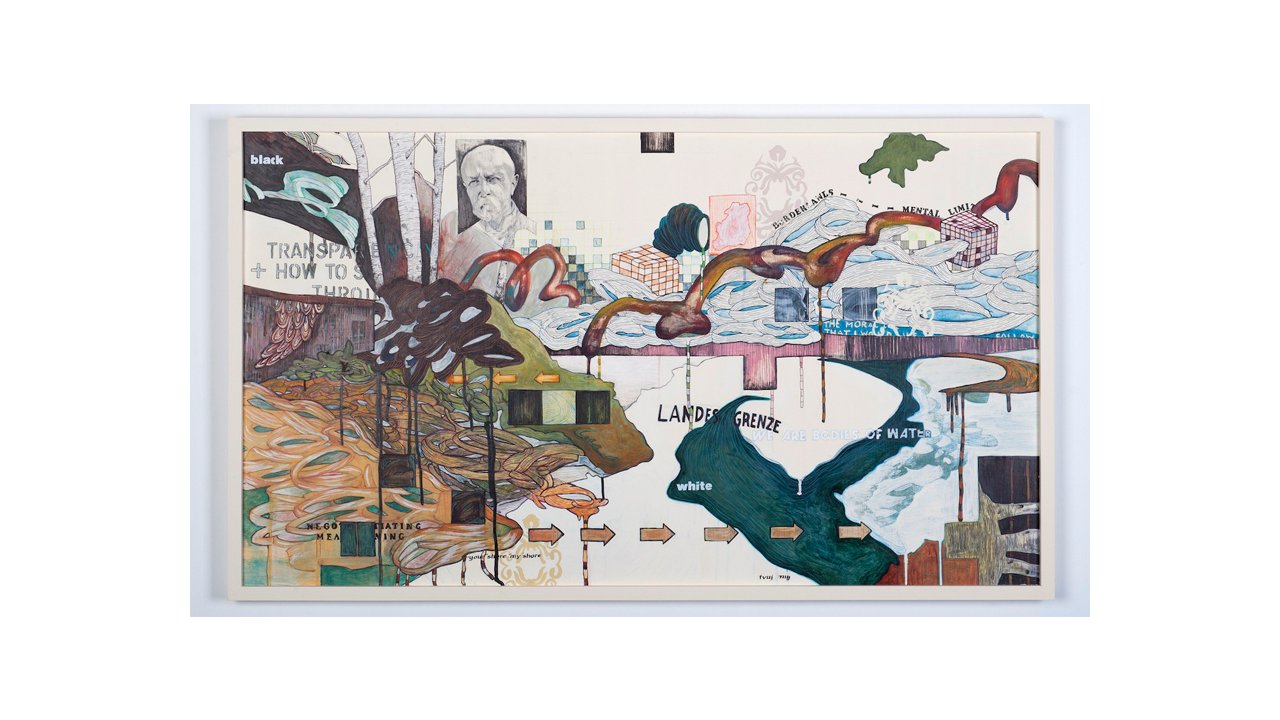Prague-based Canadian artist Jessica Serran has retraced her roots by investigating the Czech Republic’s effects on the identity of Czechs.
The culmination of a two-year project, an exhibition opening at Prague’s Běhal Fejér Institute on May 23 and running through June 24, will feature ten paintings by Prague-based Canadian artist Jessica Serran. The works are landscapes, but not in the traditional sense. Rather they are the “internal landscapes”, as Serran calls them, of nine Czechs she sat down with between 2010 and 2012 to engage in a series of one-on-one conversations. Exploring “identity, who you are, and what it means to be from a particular place”, Serran looked at what it means to be from this particular place and how that influences the Czech identity. The project in its entirety, which also includes a book, is entitled “Field Guide to the Czech Psyche”.
“Nothing about this project was [an attempt] to define what it is to be Czech”, Serran says. “[In regard to the title, I saw the project as] notes made while walking in the field. It is also meant for readers to use in a similar fashion,” Serran explains. “It is more the experiencing of [the Czech psyche through these particular nine people] than answering the question [about what exactly it is].”
The impetus behind the project was Serran’s desire to “deepen [her] relationship with this country”. The little Serran knew of it was through the unhappy eyes of her Slovak great-grandmother, who immigrated to Canada in her late thirties and always longed to return to her home country.
So in 2009, Serran set off for the Czech Republic to take part in an artist’s residency in Tábor. While there, she engaged in a project that she describes as a precursor to ‘Field Guide’. Everyday she sat at a table in the city’s center with a sign expressing something about how she felt, followed by ‘And you?’ inviting passers-by to express what they were feeling. In response, Serran informed them that she would make a drawing for them that they could come back and get the next day. The culmination of the project was a large painting in response to the interactions and what was shared.
In the same vein, the paintings Serran created for Field Guide were a response to the interactions she had with the nine Czechs. Among them were five women and four men – with the youngest at 20 and the oldest at 60. With each of them, Serran began the conversation by asking, “If I asked you to answer the following question, ‘who are you?, what would you say?”. From there she “tried to ask certain questions that only an outsider would ask “ – adjusted according to each individual – including for example “How has centuries of rule by other nations for so long affected Czechs?”, “Why is feminism such a dirty word here?”, “Why is the Czech language so seemingly exclusive and nearly impossible for both foreigners and Czechs alike to speak properly?” or “What’s the deal with tramping?”
One participant, who Serran described as an arts and culture writer in his early forties, ended up critiquing the concept of identity in general “providing a kind of meta-layer to the project” Serran said. She also pointed out that he was persistent in his encouraging Serran to get out of the country describing it as a place where people have given up. ‘We gave up on the impossible things’ is how he phrased it.
With Andrea – a woman in her late thirties, Jessica discussed, among other topics, separation and displacement – in the context of talking about Andrea’s father, who was sent from his home in Eastern Slovakia to Teplice for obligatory military service, communism in general, and its still lingering effects. That particular painting, “In Conversation with Andrea”, (each of the paintings bear that same title “In Conversation with” followed by the person’s name) became the representative painting for the whole project.
As with that painting, many of the elements of each of the paintings are derived from photographs from the participants, which Serran used as source material. Cultural references can be found as well. “I honed in on parts of the culture based on who the person was,” says Serran. A tenth painting, “In Conversation with Jessica” is an ‘internal landscape’ of the artist’s experience of the project.
The book, which is organized into ten chapters (bearing the same name of each of the paintings) features excerpts from the interviews along with some of the supplied photographs. “The book helps to unpack the paintings”, says Serran.
Of the project as a whole, Serran hopes that for viewers it will motivate a desire for more self-reflection and “broaden the spectrum of what leads to cultural identity.”
For herself, the project has led to a strong level of conviction about the specifics of her art, a connection with her Slovak family – who she has had time to get to know during her years here – and as she had hoped, a deeper relationship with this country of her late great-grandmother “[The project] wove me into this place.”
For more information about Field Guide to the Czech Psyche, have a look at this video created for Serran’s crowdfunding campaign.
Related articles












 Reading time: 4 minutes
Reading time: 4 minutes 

































